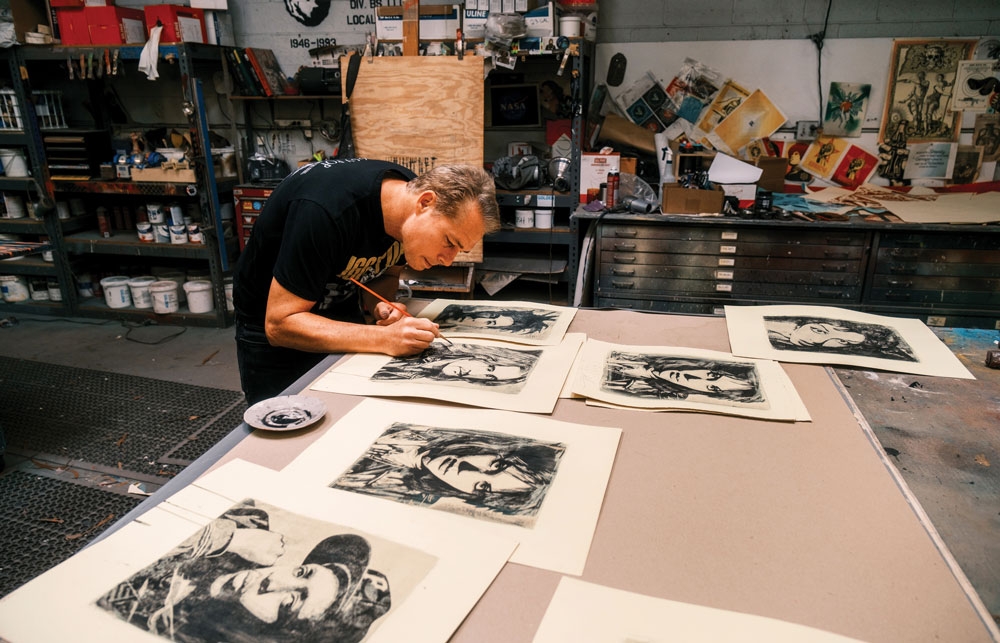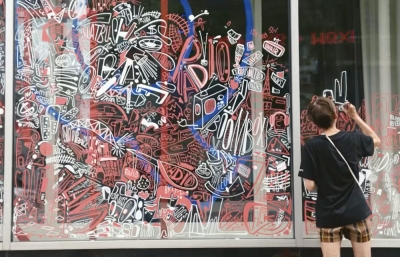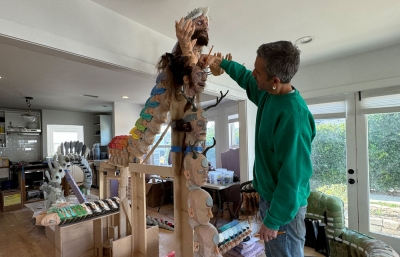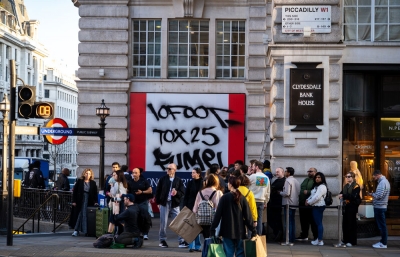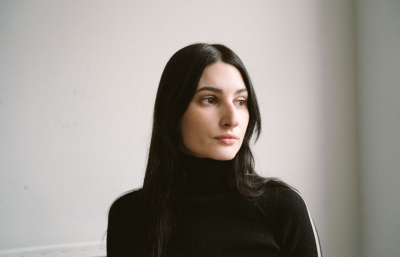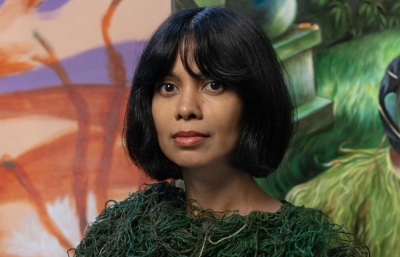Do you find yourself walking into a gallery and being like, "Okay, I now feel inspired to make a shift?" Or are you more of a privately motivated shifter? Not in a competitive way, but with more of an excitement to try something fresh? Because mono-etching, to me, has an antiquated but charming shift.
On the one hand, I try to get out of the mode, which I think a lot of people are in, which is of looking at what's hot on gallery sites, what's cool on Instagram, and going, "Let me try to incorporate some of that," because I start to think, "Oh, am I just caught up in the excitement of the moment? Is this going to endure?" And also, I don't want to look like I'm just doing trendy stuff. So I'm always trying, when I feel like I'm sucked into that, which could easily happen, I go, "Oh, you know what? I need to look back at some art history. I need to look back at some of the artists who have inspired me," whether that's Barbara Kruger or Ed Ruscha. I mean, I went to see a Georgia O'Keeffe exhibit when I was in Houston, and that was phenomenal. And I wouldn't say Georgia O'Keeffe's like one of my favorite artists, but actually, some aspects - not necessarily her paintings, but her photography—inspired me.
I'm always looking at what's out there that I think is strong. It could be brand new, but it could be 500 years old. And with this series, I wouldn't say that looking at Leonardo da Vinci and Michelangelo's drawings were the primary driver, but as far as how a very subtle highlight on the bridge of a nose or a negative space area that's left a little bit looser can add a charm to a piece. There's no doubt that that was part of what was feeding these works. But then, there are aspects of these works that have absolutely nothing to do with their aesthetics or the way that they worked from a technical standpoint. I think everybody ends up being an amalgamation of a lot of different influences and I try to keep my eyes and mind open to that stuff.
I’m curious. In this show and many of the shows you have made over time, has your idea of icons changed over the last, let's say, 20 or 30 years since you've been making work?
Oh, absolutely. I think when I was young, my icons were like the Santa Cruz Skateboards logo, the Black Flag logo, the anarchy symbol, and the peace sign. That's what I sort of understood as icons. Symbols that people could recognize, whether they were mainstream culture or subculture. And then, as I got more sophisticated in looking at art, I started to see style as something that was iconic. Raymond Pettibon's work is iconic, it's instantly recognizable, and there's nobody else who makes marks exactly the way he does. Keith Haring is iconic, Warhol's style of execution, though copied by many, is still iconic. You could even say that, independent of who Warhol is as an icon himself, even for somebody who doesn't know his name, the artistic style and imagery have that kind of weight to them.
So I think my understanding of what an icon was, what was iconic, and then how you developed a body of iconography, got a lot more sophisticated over the years. Now, having to work in the streets where stuff has to jump out instantly and be legible, I was intuitively developing things that I would consider icons. And so the simplified Andre the Giant face, which I call The “Icon Face,” was very, very intentional.








